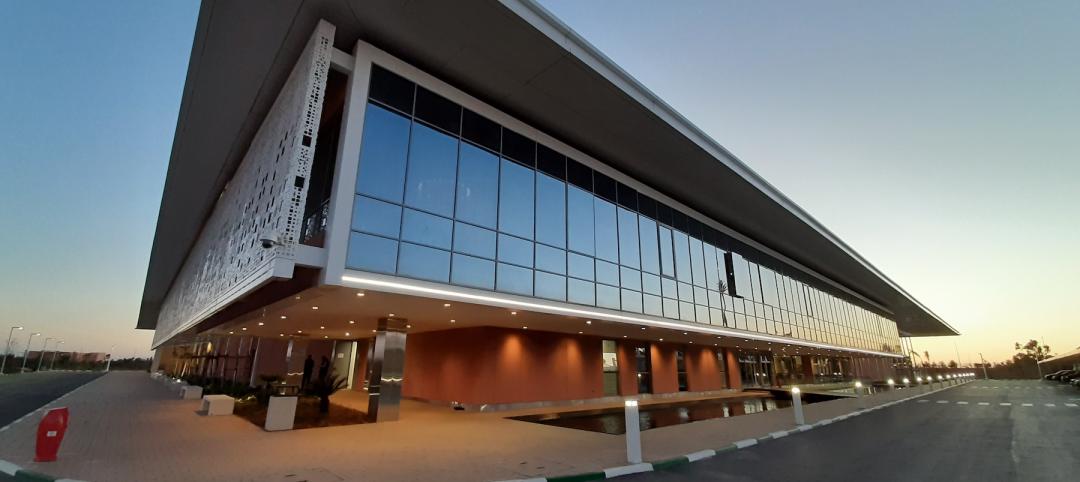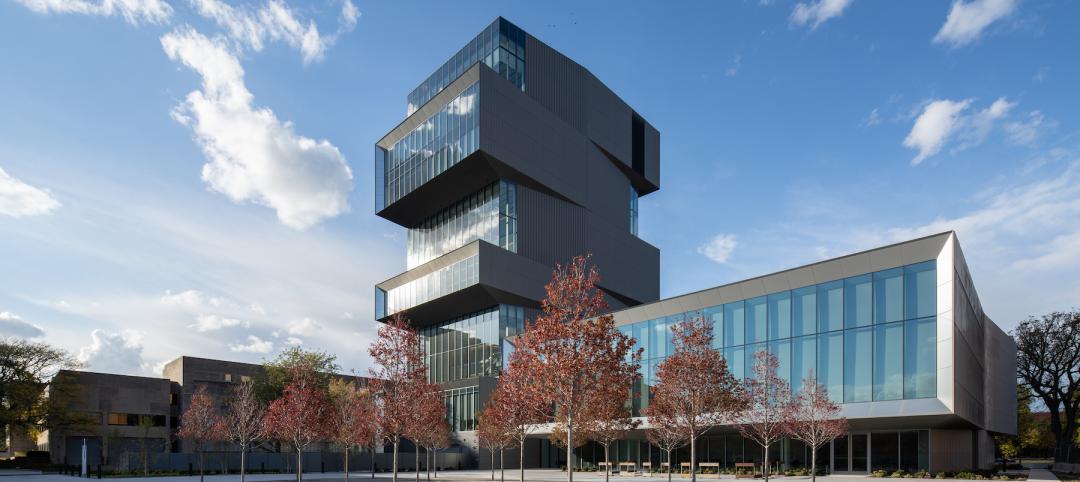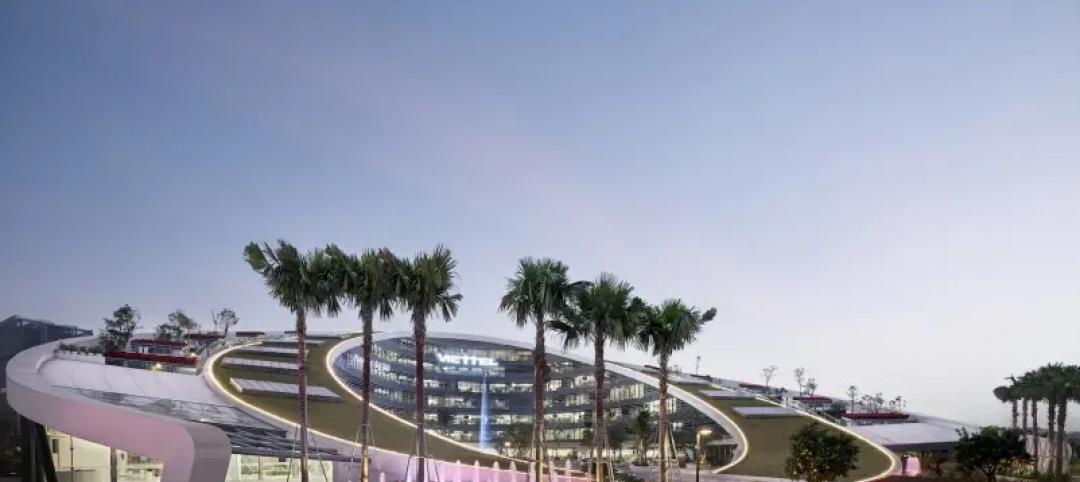Turner Construction Company, the leading general builder in the United States, today announced the results of a new Market Barometer survey that focused on environmentally-sustainable, or “Green,” building, and on sustainable practices in general. Key findings revealed that companies remain committed to constructing Green buildings, but fewer executives said their companies were likely to seek LEED certification when constructing a Green building, citing the cost and difficulty of the LEED certification process.
Brightening outlook for construction projects
Among real estate owners, developers, and corporate owner-occupants, 64% said they expect to undertake new construction projects over the next 12 months (up from 46% in the 2010 survey), and 71% said they expect to undertake renovation projects over the same period (up from 58% in the 2010 survey).
Widespread commitment to sustainable practices
Eighty-four percent of respondents said their companies were committed to environmentally-sustainable practices. Of that percentage, 56% of executives said their companies were extremely or very committed to following environmentally-sustainable practices in their operations, while an additional 33% said they were somewhat committed. In addition to citing financial reasons for this commitment, executives were most likely to cite broader considerations as extremely or very important including belief that it’s the ‘right thing to do,’ (68%), impact on brand/reputation (67%), and customer requirements (61%), along with cost savings (66%).
Reducing energy costs and operating expenses are the key drivers to green construction
Executives were most likely to cite financial factors as being important to their companies’ decisions on whether to incorporate Green features in a construction project. Respondents indicated that energy efficiency (84%) and ongoing operations and maintenance costs (84%) were extremely or very important to their decisions. However, more than two-thirds of executives also said that non-financial factors were extremely or very important including indoor air quality (74%), health and well-being of occupants (74%), and satisfaction of employees/occupants (69%). However, only 37% of executives said it was extremely or very important to their companies to minimize the carbon footprint of their buildings. This suggests that when environmental factors influence the decision to incorporate Green features, these are typically improvements to the indoor environment and its impact on the health and wellbeing of occupants and on the productivity of employees, rather than broader concerns about global environmental impacts. Respondents also indicated that impact on brand/reputation (67%) and employee productivity (67%) were important factors.
A large majority of executives said their companies would incorporate Green features if constructing or renovating a building. Eighty-one percent of executives said their companies would be extremely or very likely to invest in energy efficiency improvements if they were undertaking a construction project, while more than half said they would invest in improved indoor environmental quality (63%), improved water efficiency (57%), and Green materials (53%).
“Energy efficiency figures prominently in the decision-making process of green building primarily because of its large economic impact. Water efficiency in Green construction was seen as less important. This is in spite of a growing awareness that water is a finite resource, both in its operational use and its role in the production of goods and materials. While the direct economic impact of water efficiency is less than the savings on energy, its environmental impact is quite significant,” said Michael Deane, Vice President and Chief Sustainability Officer at Turner Construction.
Fewer companies plan to seek LEED certification
Although the vast majority of companies remain committed to Green buildings, the percentage of executives who thought it was extremely or very likely that their company would seek LEED certification if they constructed a Green building was only 48%, down from 53% in the 2010 survey and 61% in the 2008 survey. Among executives who said their companies were not likely to seek LEED certification, the most important reasons cited were the cost of the certification process (82%), staff time required (79%), time required for the process (75%), and the overall perceived difficulty of the process (74%). It is apparent that in the last four years many companies seem to have become more knowledgeable about the means and methods of designing and constructing Green buildings and are less reliant on LEED as a checklist or a scorecard, as indicated by 52% of executives saying that they prefer to rely on their company’s internal building standards. At the same time, 41% of executives thought it was at least somewhat likely that their companies would consider seeking certification under a rating system other than LEED if they constructed a Green building. Of those executives who indicated they would use another system, 63% said they would be extremely or very likely to consider seeking certification under ENERGY STAR, which again highlights the importance of energy efficiency. It should be noted that some owners may elect to certify under more than one rating system.
“We’ve seen from our own work and the continuing growth of the green building market that in spite of this reduction in enthusiasm for LEED certification, respondents are still building green,” said Deane. “While some respondents are relying on their own standards or are considering another rating system, LEED certification remains the best third party verification of achievement that is recognized by consumers and that can be used to market and promote a property.”
Concerns persist about construction costs and the length of the payback period
When asked what length of payback period would be acceptable when considering Green features, 44% of executives said they would accept five years and almost 80% of executives said they would accept a payback period of five years or longer. Despite the acceptance by most executives of an extended payback period, 61% of executives still felt that the length of the payback period was an extremely or very significant obstacle to the construction of Green buildings while 62% cited higher construction costs. +
Related Stories
Giants 400 | Aug 26, 2021
2021 Data Center Giants: Top architecture, engineering, and construction firms in the U.S. data center facilities sector
Corgan, Holder Construction, Jacobs, and Whiting-Turner top BD+C's rankings of the nation's largest data center facilities sector architecture, engineering, and construction firms, as reported in the 2021 Giants 400 Report.
Hotel Facilities | Aug 26, 2021
Building hotels with modules, with citizenM's Menno Hilberts
In this exclusive interview for HorizonTV, Menno Hilberts, Managing Director of Project Management with hotelier citizenM, explains how the company is employing modular construction to help double its presence in the U.S.
Giants 400 | Aug 25, 2021
Top 40 Engineering/Architecture Firms for 2021
Jacobs, AECOM, Burns & McDonnell, and Alfa Tech top the rankings of the nation's largest engineering architecture (EA) firms for nonresidential buildings and multifamily buildings work, as reported in Building Design+Construction's 2021 Giants 400 Report.
Giants 400 | Aug 25, 2021
Top 95 Architecture/Engineering Firms for 2021
Stantec, HDR, HOK, and SOM top the rankings of the nation's largest architecture engineering (AE) firms for nonresidential and multifamily buildings work, as reported in Building Design+Construction's 2021 Giants 400 Report.
Giants 400 | Aug 25, 2021
Top 160 Architecture Firms for 2021
Gensler, Perkins and Will, HKS, and Perkins Eastman top the rankings of the nation's largest architecture firms for nonresidential and multifamily buildings work, as reported in Building Design+Construction's 2021 Giants 400 Report.
Sports and Recreational Facilities | Aug 25, 2021
The rise of entertainment districts and the inside-out stadium
Fiserv Forum, home to the 2021 NBA Champion Milwaukee Bucks, proved that the design of the space outside a stadium is just as important as inside.
Architects | Aug 24, 2021
AIA’s Compensation Report reveals how architecture firms weathered the pandemic
According to the report, architecture firms lost 16,000 positions between February and their low in July of 2020.
Architects | Aug 19, 2021
BD+C Events
Building Design+Construction's annual events include the Women in Design+Construction conference and the ProConnect meeting series.
Architects | Aug 19, 2021
Quattrocchi Kwok Architects marks 35 years in business with commitment to social justice
QKA, the largest architecture firm in the North Bay area of San Francisco, has received the JUST 2.0 Social Transparency Label from the International Living Future Institute.
Multifamily Housing | Aug 19, 2021
Multifamily emerges strong from the pandemic, with Yardi Matrix's Doug Ressler
Yardi Matrix's Doug Ressler discusses his firm's latest assessment of multifamily sales and rent growth for 2021.

















